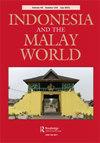心灵的力量在世界上熊熊燃烧
IF 0.9
3区 社会学
0 ASIAN STUDIES
引用次数: 4
摘要
印度教-佛教的神话、意象和宗教信仰在爪哇伊斯兰教中的突出地位让观察者感到困惑。以Mahābhārata和Rāmāyaṇa-derived为主题的皮影戏就是一个很好的例子。另一个例子是18世纪晚期泗水伊斯兰王国古爪哇文学的“文艺复兴”,它产生了今天仍在庆祝的经典作品。除了一种错误的假设,即爪哇人如此强烈地倾向于融合,以至于公然的教义冲突不会困扰他们的知识分子之外,推动这一事业的因素仍然模糊不清,尽管它对爪哇宗教的发展产生了关键的影响。我仔细研究了一些未经研究的手稿,并将迄今为止尚未联系的学术信息拼凑在一起,试图了解这些因素,参考紧迫的环境,生活理论,以及思考,感受和希望的人。首先,我研究了爪哇人关于印度教-佛教和伊斯兰教传统之间关系的理论思想,以及史诗叙事与爪哇的现在和未来之间的联系。在此背景下,我考虑了1778年的倡议,重新解释古代史诗遗产,从Arjunawiwāha(约1030年创作)开始。对这首诗的伊斯兰解释学的兴趣焦点是对内在力量的追求以及由此产生的暴力,知识和启示的外部力量,以及未来的王权。本文章由计算机程序翻译,如有差异,请以英文原文为准。
The power of the heart that blazes in the world
ABSTRACT The prominence of Hindu-Buddhist mythology, imagery, and religiosity in Islamic Java has puzzled observers. The shadow play with its Mahābhārata- and Rāmāyaṇa-derived subject matter is a prime example. Another is the late 18th-century ‘renaissance’ of Old Javanese literature in the Islamic kingdom of Surakarta, which produced classics still celebrated today. Beyond a misguided assumption that the Javanese were so strongly disposed to syncretism that blatant doctrinal clashes did not bother their intellectuals, the factors that animated this enterprise remain obscure, despite its critical consequence for the development of Javanese religiosities. I scrutinize several unstudied manuscripts and piece together information from hitherto unconnected scholarship to try to understand these factors, with reference to pressing circumstances, living theories, as well as people who think, feel, and hope. First I examine Javanese theoretical ideas about the relationship between the Hindu-Buddhist and Islamic traditions and the connection between epic narratives and the present and future of Java. Against this background I consider the initiative, in 1778, to reinterpret the ancient epic heritage, beginning with the Arjunawiwāha (composed c. 1030). Focal points of interest in the Islamic hermeneutics of this poem were a quest for inner potency and the resulting external power of violence, knowledge and revelation, and future kingship.
求助全文
通过发布文献求助,成功后即可免费获取论文全文。
去求助
来源期刊

Indonesia and the Malay World
ASIAN STUDIES-
CiteScore
2.00
自引率
0.00%
发文量
17
期刊介绍:
Indonesia and the Malay World is a peer-reviewed journal that is committed to the publication of scholarship in the arts and humanities on maritime Southeast Asia. It particularly focuses on the study of the languages, literatures, art, archaeology, history, religion, anthropology, performing arts, cinema and tourism of the region. In addition to welcoming individual articles, it also publishes special issues focusing on a particular theme or region. The journal is published three times a year, in March, July, and November.
 求助内容:
求助内容: 应助结果提醒方式:
应助结果提醒方式:


